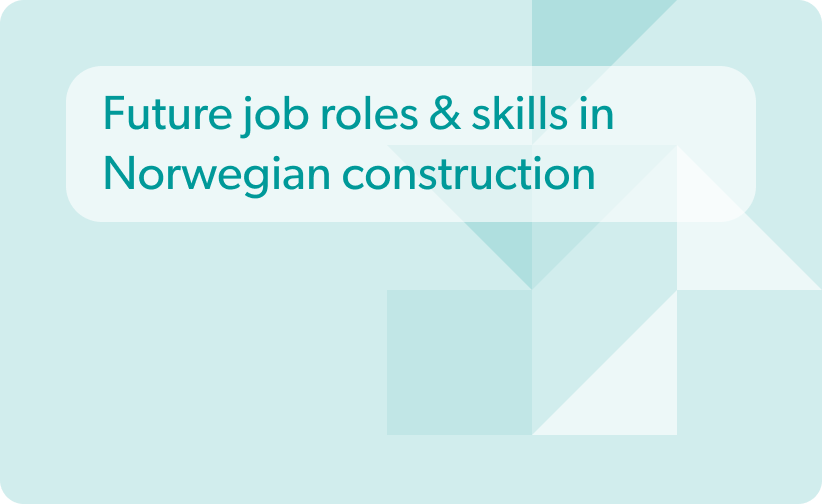Talent relationship management: definition, process, and benefits
The Spanish soccer team FC Barcelona has a renowned youth academy, La Masia, which has produced some of the world’s best soccer players, including Lionel Messi and Andres Iniesta. The academy focuses on developing players’ soccer skills, building relationships with players, and providing them with a supportive environment where they can thrive.
In basketball, football, soccer, and similar sports, coaches and managers work to identify talented players and build strong relationships with them, both on and off the field. Coaches and managers work to develop relationships with young players at a very early age, often starting in youth leagues. They then work to develop those players over time, providing them with training and support and building relationships with them that can last for many years.
These are some great examples of how talent relationship management can be used to build successful teams and develop talented individuals over time.
What is talent relationship management?
Talent relationship management (TRM) is a formal practice focused on building and maintaining relationships with internal and external talent. Organizations can attract, develop, and retain the best talent using tools and strategies including candidate relationship management, employee engagement programs, and succession planning. The goal of TRM is to create a talent pipeline that meets the needs of the business, both now and in the future.
Internal TRM and external TRM: differences and similarities
The main difference between internal talent relationship management and external TRM is the focus of their talent management efforts.
Internal TRM focuses on managing and developing the talent already employed within the organization. This includes identifying high-potential employees, providing training and development opportunities, and creating career advancement paths within the organization. Internal TRM is focused on retaining and developing the organization’s existing workforce.
On the other hand, external TRM focuses on building and maintaining relationships with potential future employees outside of the organization. This includes employer branding, talent acquisition, and creating a positive candidate experience during the hiring process. External TRM focuses on attracting top talent and building a pipeline of potential employees.
While internal and external talent relationship management focus on different areas of talent management, there are some similarities between them:
Both aim to attract and retain talented individuals: While internal TRM focuses on retaining existing employees, external TRM aims to attract potential candidates.
Both require effective communication and relationship-building skills: Whether building relationships with current employees or potential candidates, effective communication and relationship-building skills are crucial for internal and external TRM success.
Both require a deep understanding of the organization’s culture and values: To manage internal talent or attract external talent effectively, it’s important to have a clear understanding of the organization’s culture and values and to ensure that these are communicated effectively to potential candidates.
Both can significantly impact an organization’s success: Effective talent management, whether focused on internal or external talent, can lead to increased employee satisfaction, improved performance, and, ultimately, greater success for the organization as a whole.
Process of talent relationship management and how each step benefits the organization (with proof)
Before we start with the talent relationship management process, let’s first understand what happens when you skip one of the steps. Despite being aware of the changing market and the need to pivot, Blockbuster ultimately failed to execute its ideas and make the necessary changes to stay competitive. Though they had talented and innovative employees and ample financial resources, the company struggled to make the right choices and implement effective strategies. Why?
Blockbuster board member and activist investor Carl Icahn strongly opposed the company’s move into the online rental market, advocating for preserving Blockbuster’s brick-and-mortar roots. This led to the removal of John Antioco, the CEO who had steered the company since 1997. In his place, Jim Keyes was appointed in 2007.
Like Icahn, Keyes was committed to maintaining Blockbuster’s physical presence. However, this strategy ultimately proved to be a misstep in light of the growing trend towards digital streaming and online rentals. This example highlights the impact of missing a critical step: identifying talent and implementing effective talent relationship management strategies to ensure those individuals can contribute to the company’s success.
We will start with the first step of talent relationship management, which is to identify the organization’s future goals and needs, then match them with the right talent.
Step 1: Identify talent needs that match the organization’s future goals
Top proven benefit: According to a study by the Society for Human Resource Management, organizations that align their talent strategy with their business strategy are more likely to outperform their competition in key revenue growth and profitability areas. In fact, 73% of high-performing organizations report that their talent strategy is aligned with their business strategy, compared to only 42% of low-performing organizations.
Identifying talent needs that match the organization’s future goals is a crucial step in talent relationship management (TRM). HR leaders can achieve this by analyzing their employees’ skills and capabilities, projecting the skills and competencies required in the future, and identifying gaps. This involves conducting a comprehensive workforce analysis to determine the talent required to achieve future business objectives.
HR leaders can use workforce analytics to gain insights into their current workforce’s capabilities and assess whether their organization has the right mix of skills, knowledge, and experience to meet future needs. Workforce analytics can help HR leaders identify potential skills gaps, anticipate changes in employee demographics, track retirement trends, forecast future talent demands, analyze market trends, study the competition, and consult with other leaders within the organization to ensure that the talent needs identified align with the overall business strategy.
Step 2: Attract and engage the right talent
Top proven benefit: According to a report by LinkedIn, 70% of the global workforce comprises passive talent: people who aren’t actively seeking new jobs but are open to new opportunities. Additionally, a study by SHRM found that the cost of a bad hire can range from 50% to 150% of their annual salary, underscoring the importance of attracting and engaging the right talent from the outset.
Attracting and engaging talent is a crucial aspect of talent relationship management. HR leaders must identify the right channels to attract talent and communicate their organization’s value proposition. One way to attract talent is through job postings on popular job boards, social media platforms, and career websites. Another way is through employee referral programs, where current employees can refer their contacts for open positions.
HR leaders must ensure their employer brand is strong and visible to engage talent. They should highlight the organization’s ethics, culture, values, and career growth opportunities to attract top talent. The job description and salary details should be clear and transparent, detailing the role’s responsibilities and expectations. HR leaders can also engage talent by providing a positive candidate experience, such as by providing timely communication and feedback.
Step 3: Nurture relationships
Top proven benefit: According to a LinkedIn report, companies prioritizing candidate relationship management can reduce their cost per hire by over 50%. Additionally, companies with strong talent relationship management practices experience 28% less turnover, which can result in significant cost savings associated with recruitment, training, and lost productivity.
To nurture relationships with candidates and employees, HR leaders must focus on building and maintaining open lines of communication. This involves personalized engagement, regular feedback, and a willingness to listen and respond to the needs and concerns of each individual.
By leveraging employee surveys, performance data, and other feedback mechanisms, HR leaders can gain insight into what employees and candidates are looking for in their careers and how they can be better supported and engaged.
Personalized engagement is critical in building strong relationships with employees and candidates. This involves providing opportunities for learning and development as well as offering flexible work arrangements and recognition for achievements. HR leaders can also use technology to support personalized engagement through online training and development programs, employee portals, and social media platforms.
Step 4: Develop talent
Top proven benefit: According to a report by Deloitte, companies that invest in employee training and development have 218% higher income per employee than companies that don’t.
To develop talent, HR leaders can create customized learning and development plans tailored to each employee’s needs and goals. This can involve providing on-the-job training, coaching, mentoring, and opportunities for job shadowing or cross-functional assignments. HR leaders can also provide access to online training resources and encourage employees to attend industry conferences and seminars to stay up to date on the latest trends and developments.
To effectively develop talent, HR leaders must ensure that their programs align with the organization’s overall strategy and goals. They should regularly assess the effectiveness of their programs and make adjustments as needed to ensure that they meet the organization’s and employees’ needs. By doing so, organizations can help create a culture of learning and development that supports their long-term success.
Create effective learning journeys that support employee development and drive business results
HRForecast helps organizations identify skills gaps and development needs within their workforce by analyzing data on employee performance, job requirements, and industry trends to develop targeted learning programs and initiatives that address specific needs.
Step 5: Retain talent
Top proven benefit: According to a study by the Center for American Progress, the cost of losing an employee can range from 16% of the employee’s annual salary for unskilled hourly workers to 213% for highly trained specialists.
Research by Gallup has found that companies with engaged employees outperform those without by 202%.
A study by the Work Institute found that the cost of employee turnover in the United States alone was $617 billion in 2018. The study also found that about 77% of that turnover was preventable, indicating that effective talent relationship management can lead to significant cost savings.
Retaining talent is an essential part of talent relationship management. HR leaders can retain talent by creating a work environment that meets employees’ needs, expectations, and career goals. Providing competitive compensation, benefits packages, and opportunities for learning and development along with creating a positive workplace culture are critical components of retention.
Measuring employee turnover and attrition rates, employee satisfaction levels, and employee engagement levels can help HR leaders gauge the effectiveness of their retention strategies. Additionally, tracking employees’ career progression and skills development can help identify opportunities for growth and career advancement, which can increase employee satisfaction and retention.
Other key performance indicators (KPIs) that HR leaders can measure to evaluate the effectiveness of their retention efforts include the time it takes to fill vacant positions, employee referral rates, and absenteeism rates. By monitoring these KPIs, HR leaders can identify areas for improvement and implement changes to improve retention and maintain a positive and engaged workforce.
Step 6: Measure success
Top proven benefit: A survey by MIT and IBM reported that companies with a high level of HR analytics had:
- 8% higher sales growth
- 24% higher net operating income
- 58% higher sales per employee
According to an article by Gallup, that companies that regularly measure their talent management programs are 2.5 times more likely to achieve their business goals. These statistics emphasize the importance of measuring the success of talent relationship management and using data to make data-driven improvements.
To measure the success of their talent relationship management process, HR leaders need to track and analyze key metrics that indicate how well their strategies are working. One important metric is time-to-hire, which measures how long it takes to fill open positions. HR leaders should aim to reduce the time-to-hire as much as possible without compromising the quality of the hire.
Retention rates are another crucial metric to measure, indicating how well the organization can retain its employees. HR leaders should track retention rates over time and compare them to industry benchmarks to identify any areas of concern.
Employee satisfaction surveys are a powerful tool for measuring the success of talent relationship management. These surveys provide valuable insights into how employees feel about the organization, its culture, and its management. HR leaders can use this feedback to identify areas of improvement and make data-driven decisions to improve employee satisfaction.
Other key metrics include employee engagement, performance metrics such as productivity and sales figures, and turnover rates. By regularly tracking and analyzing these metrics, HR leaders can make data-driven improvements to their talent relationship management process and ensure they meet the organization’s goals and objectives.
Forecasting success: HRForecast’s talent relationship management solutions
HRForecast understands the importance of talent relationship management for any organization’s success. By identifying talent needs, attracting and engaging the right candidates, nurturing relationships, developing talent through workforce planning, and retaining top performers, HRForecast helps organizations achieve their goals. HRForecast provides valuable insights so organizations can continually improve talent relationship management through data-driven metrics such as time-to-hire, retention rates, and employee satisfaction. With their expertise and experience, HRForecast consultants are ready to partner with organizations to create effective talent relationship management strategies. Contact us to learn how we can help your organization succeed through talent relationship management.
Stay up to date with our newsletter
Every month, we’ll send you a curated newsletter with our updates and the latest industry news.



























 info@hrforecast.de
info@hrforecast.de
 +49 89 215384810
+49 89 215384810






